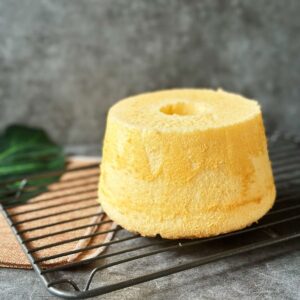My pandan bread is a fluffy twist on Hokkaido milk bread—soft as a cloud, vegan, scented with pandan, the “vanilla of Southeast Asia.” The secret? Yudane, an easy method that keeps it moist and tender for days.
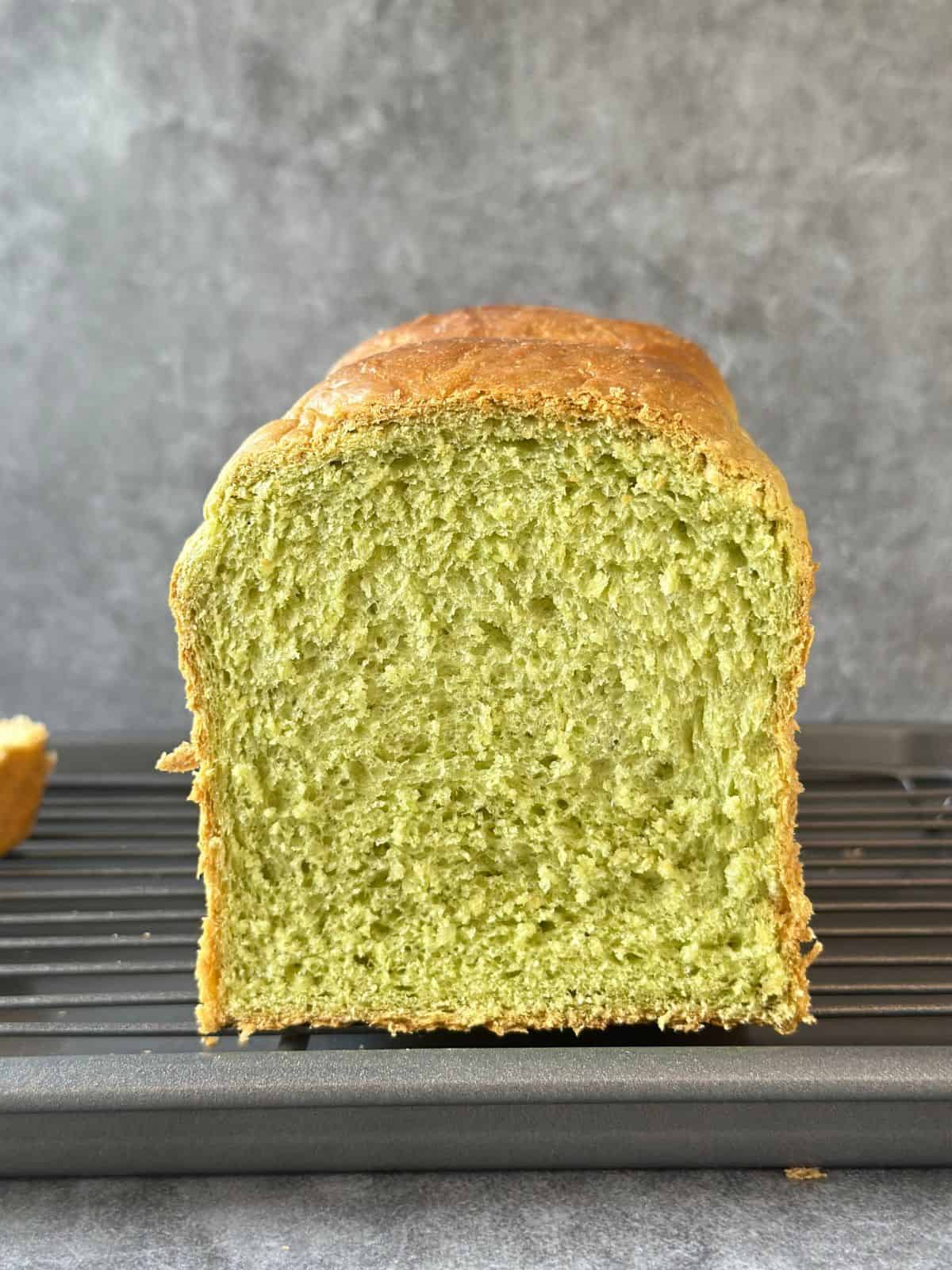
Yudane – Tangzhong’s laid-back cousin
If you’re in a hurry and just want to get cooking, feel free to jump into the recipe card.
If you’ve baked Asian bread before, you’ve probably met Tangzhong—that cooked flour-and-water roux that gives bread its signature cloud-like softness. It’s the secret behind so many favorites: China’s pork floss buns, Japan’s shokupan, Korea’s cream cheese garlic buns… you name it.
I was a Tangzhong fan through and through—until I discovered Yudane. Think of it as Tangzhong’s easier, no-fuss cousin. No pot, no stove, no whisking over heat. Just pour boiling water over flour, give it a quick stir, let it cool, and you’re good to go. Same pillowy results, way less mess.
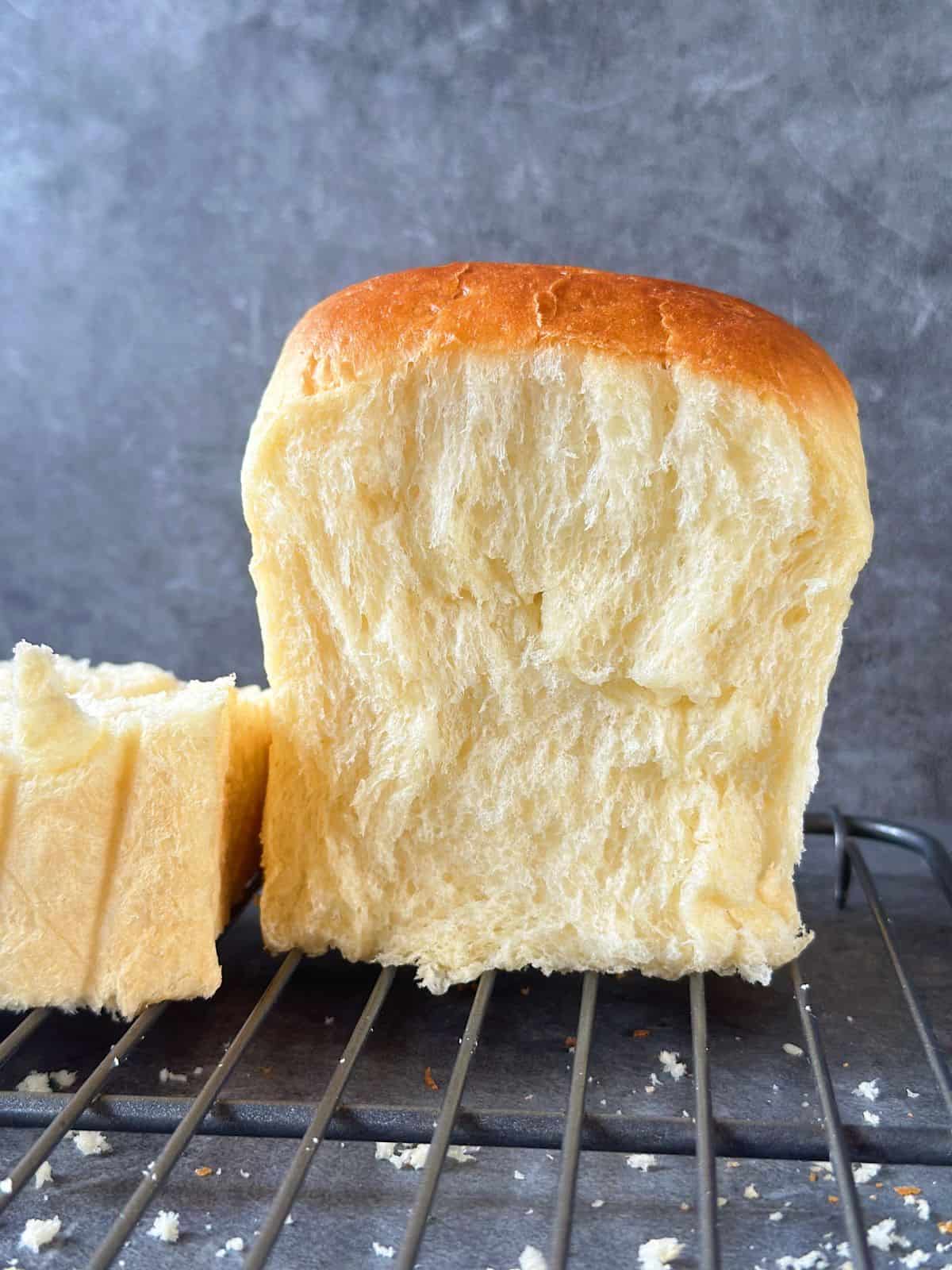
Ingredients
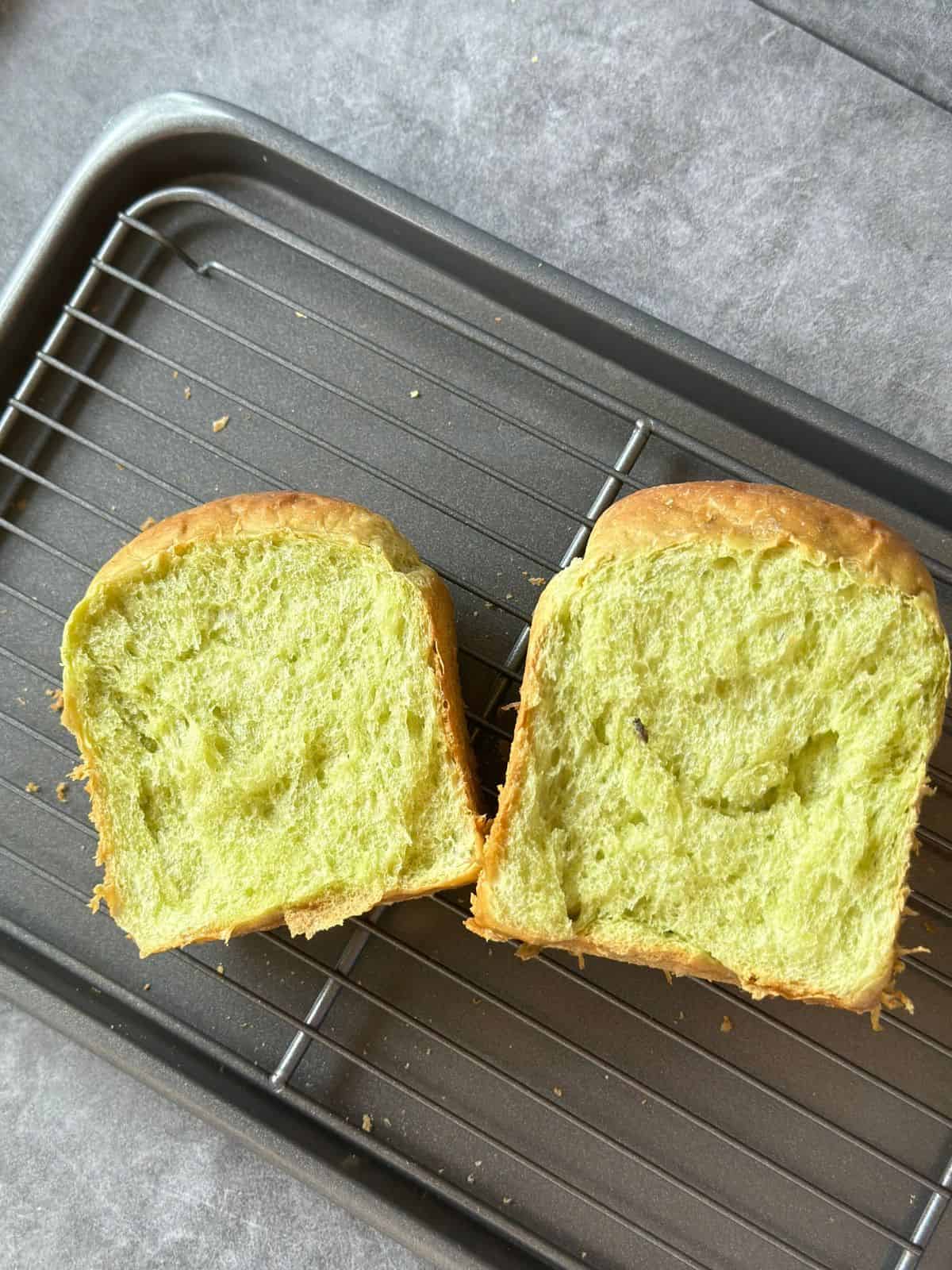
- Bread flour – High-gluten flour is the key to that springy, fluffy crumb.
- Coconut milk or coconut cream – Go for 18–20% fat so the bread stays rich and tender.
- Hot water – Used to make the yudane that keeps the bread soft and fluffy.
- Yeast – Instant or active dry, either one will do the job.
- Pandan Leaves – Pandan is often called Southeast Asia’s vanilla. You’ll find it in many pandan flavor desserts like Vietnamese pandan honeycomb cake, pandan chiffon cake, and pandan waffles. While pandan extract works, the real leaves give a fresh, grassy-sweet note that’s truly unbeatable.
- Pandan extract – Mainly for the gorgeous green color (and a little boost of aroma).
- Sugar – For sweetness and softness.
- Salt – Because every good bread needs balance.
- Coconut oil – I’m all about that coconut flavor, so I use coconut oil. Vegan butter works, too.
Instructions:
The day before
Step 1 – Make the yudane
- Mix flour with boiling water at a 5:6 ratio (for example, 50 g flour to 60 g water). Pour the boiling water straight over the flour, stir quickly until no dry bits remain, then let it cool.
- Cover and refrigerate overnight—this simple step helps lock in moisture so your bread stays soft for days.
Step 2 – Make fresh pandan paste
- Wash and rinse pandan leaves well, then cut them into pieces. Blend with water and strain to get pandan juice. Let it rest in the fridge overnight—by the next day, the liquid will separate into two layers.
- Keep the thick, green pandan layer at the bottom; that’s where the flavor lives. If you don’t have enough liquid for the recipe, top it up with water until you reach the required amount.
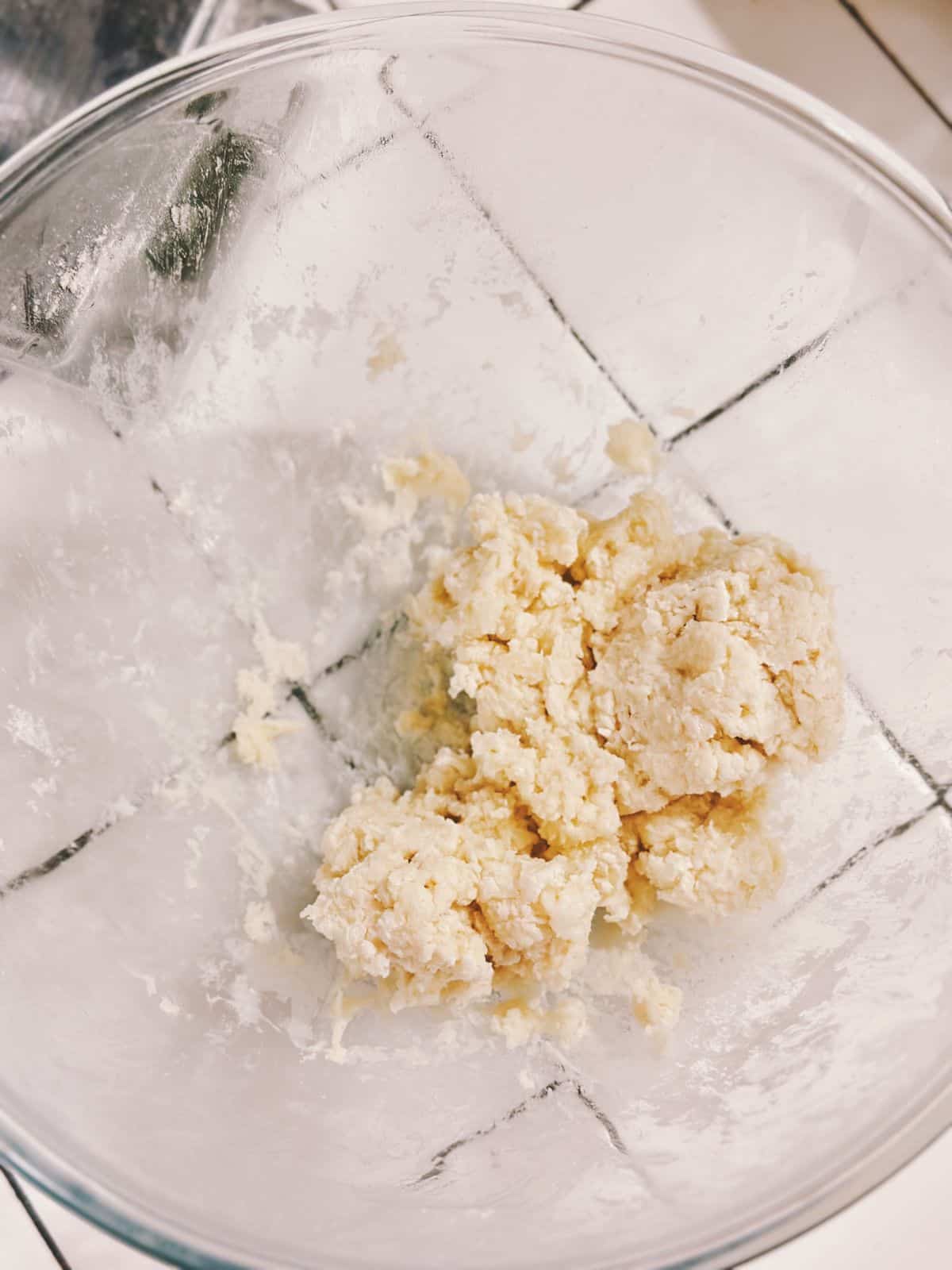

On baking day
Step 3 – Make the dough
- In a mixing bowl, add the remaining flour, pandan paste, water, pandan extract, coconut milk, sugar, salt, instant yeast, and the chilled yudane (cut into small pieces with scissors for easier mixing). If using active dry yeast, dissolve it first in the warm water from the recipe before adding.
- Knead until the dough starts to develop gluten. Then add the coconut oil (or vegan butter) and keep kneading until the dough is smooth, elastic, and pulls away cleanly from the sides of the bowl.
Step 4 – First rise
- Cover the bowl and let the dough rise in a warm, draft-free spot (an oven with a bowl of hot water works perfectly) for about 1 hour, or until it’s grown to 1.5–2 times its size.
Step 5 – Shape the loaf
- Punch down the dough to release all the big air bubbles. Divide into two equal parts.
- Pat or roll one piece into a rectangle, roll the rectangle into a snug log.
- Rotate the roll with the smooth side facing down. Pat or roll each piece into a rectangle again, about the width of your loaf pan. Starting from the short side, roll each rectangle into a snug log. Keep the tension even so the loaf rises tall instead of spreading wide. Pinch the seams and tuck the ends under.
- Continue with the other piece.
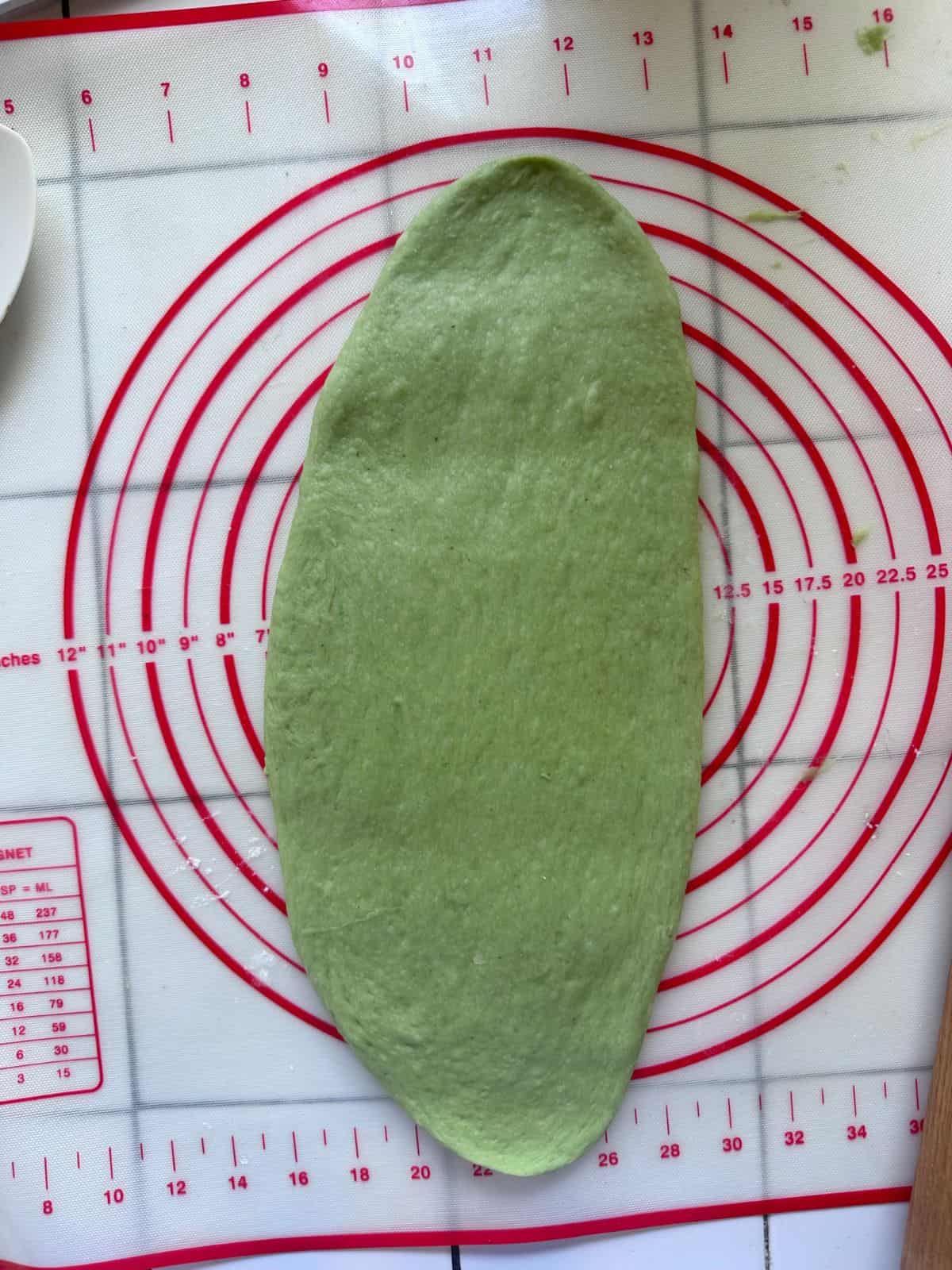
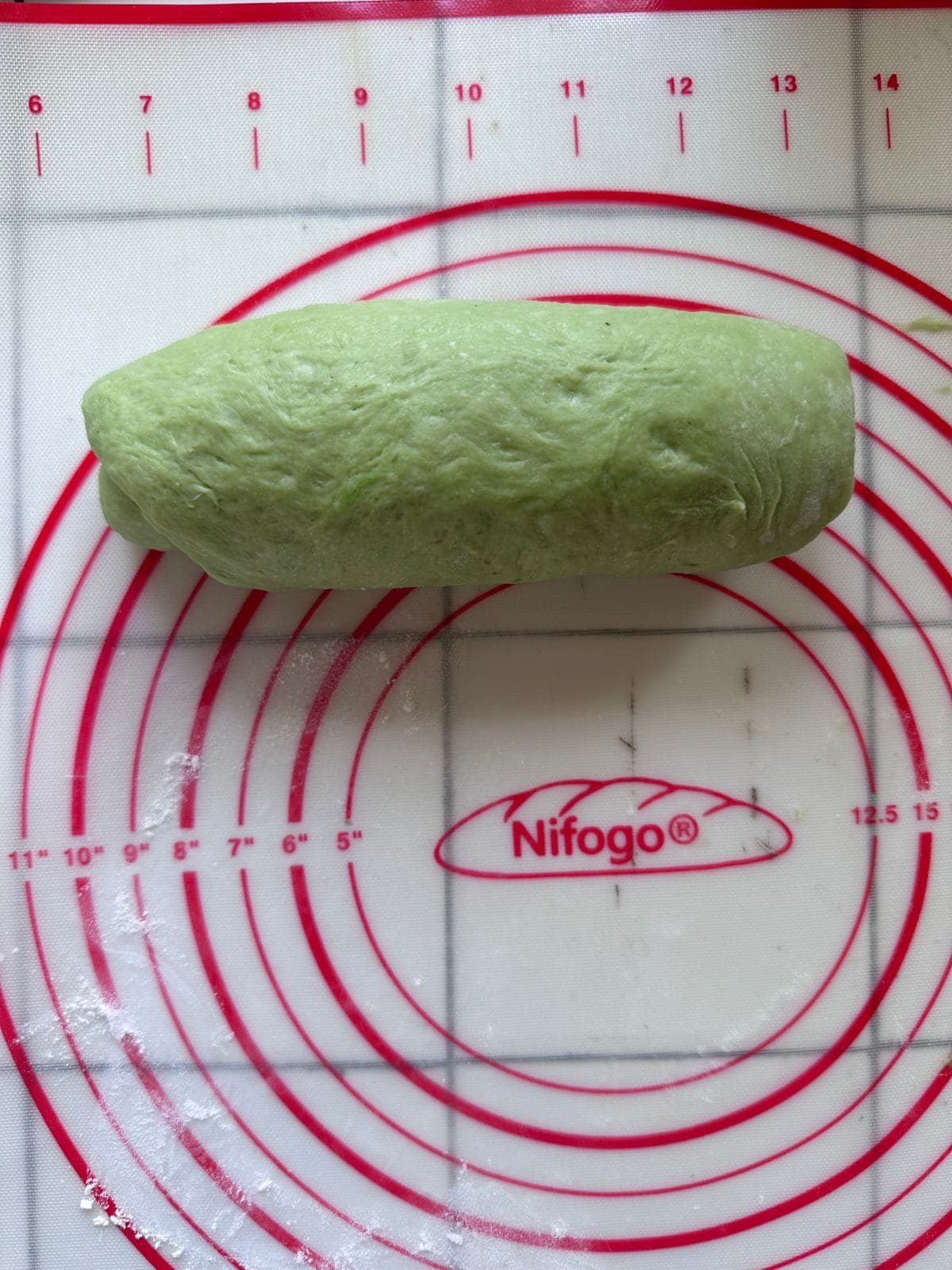
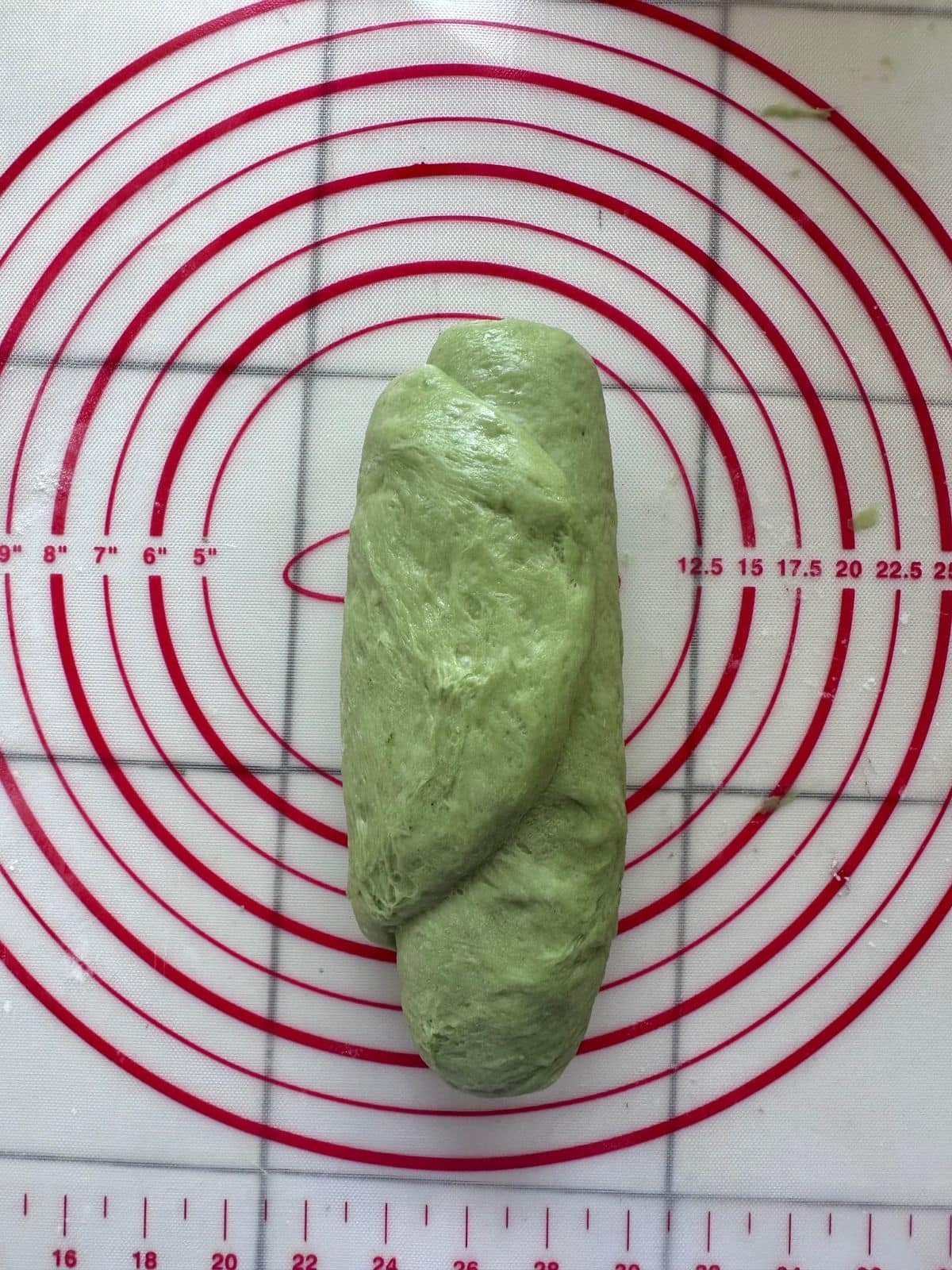
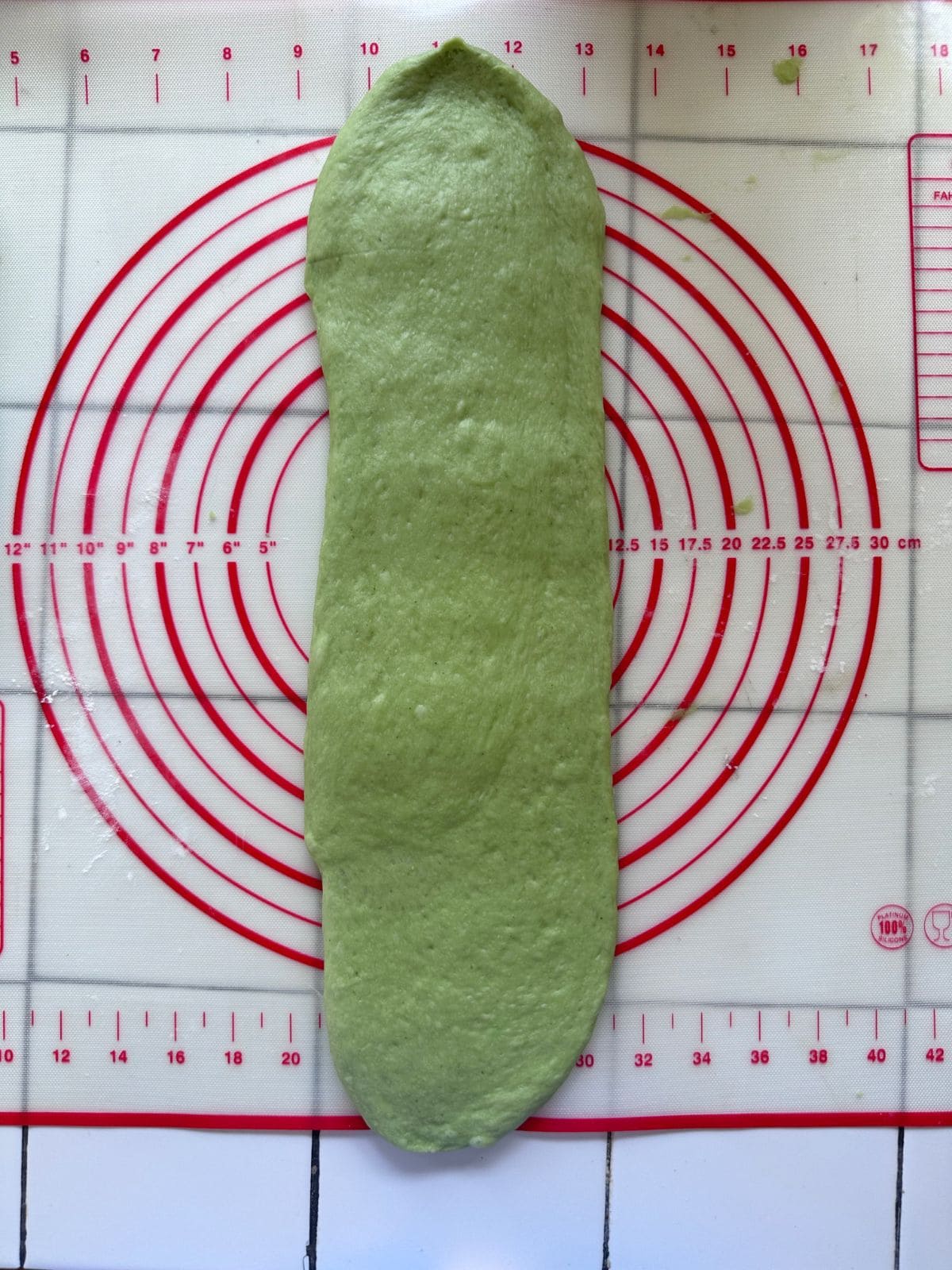
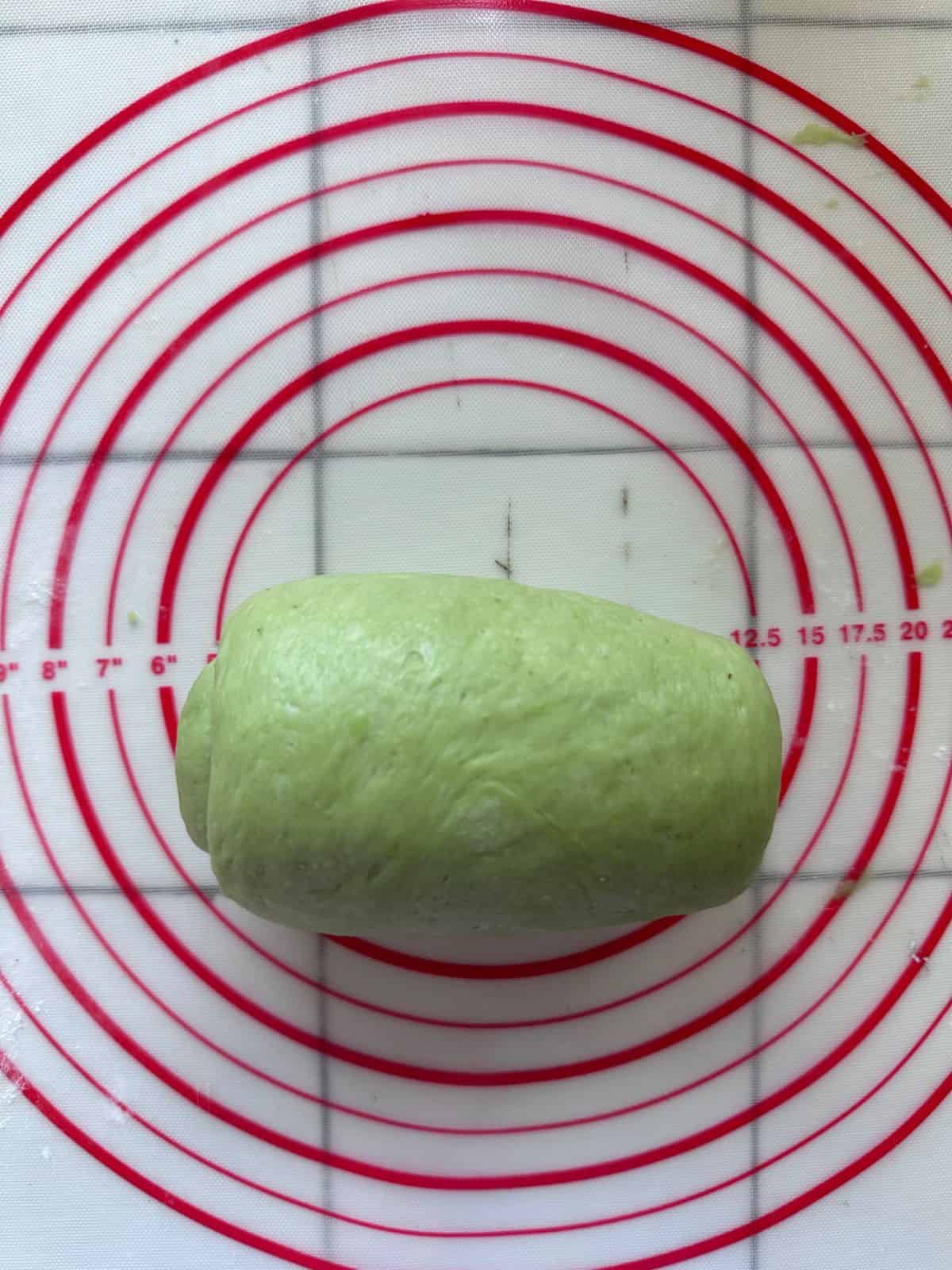
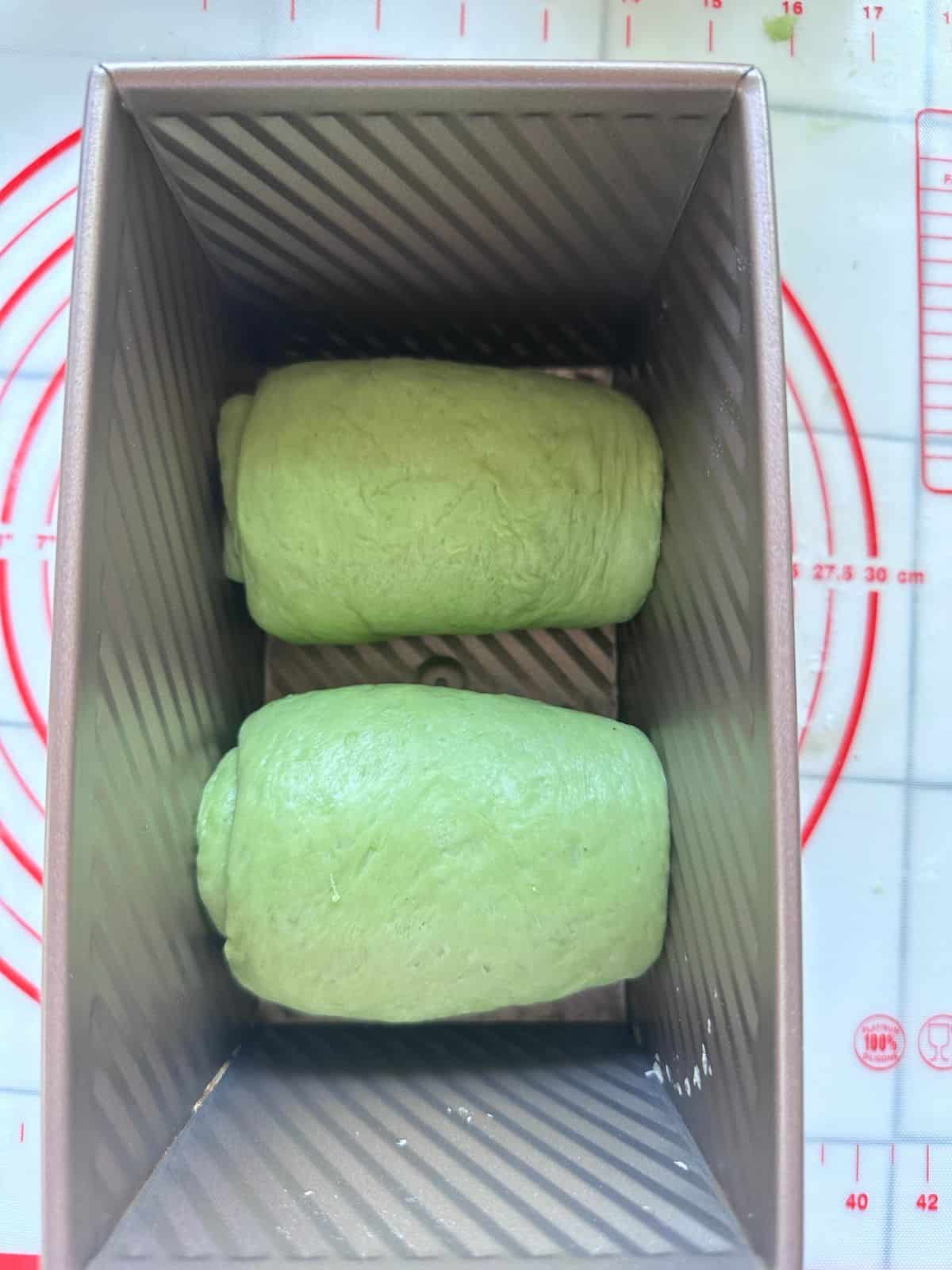
Step 6 – Second rise & Bake
- Place both logs side by side in your greased loaf pan, seam-side down. They’ll puff up together but still keep that nice “twin roll” look. Let them rise until they’re about 1.5 times bigger.
- Preheat your oven to 355°F (180°C) about 20 minutes before baking. Bake for 20 minutes, then lower the temperature to 335°F (170°C) and bake for another 20 minutes.
Step 7 – Cool and enjoy
- Once out of the oven, let the loaf rest in the pan for 5–10 minutes so the crust stays intact. Run a butter knife around the edges to loosen, then gently tip it out (use oven mitts—it’s hot!) onto a wire rack. Let it cool completely before slicing for the softest, fluffiest crumb.
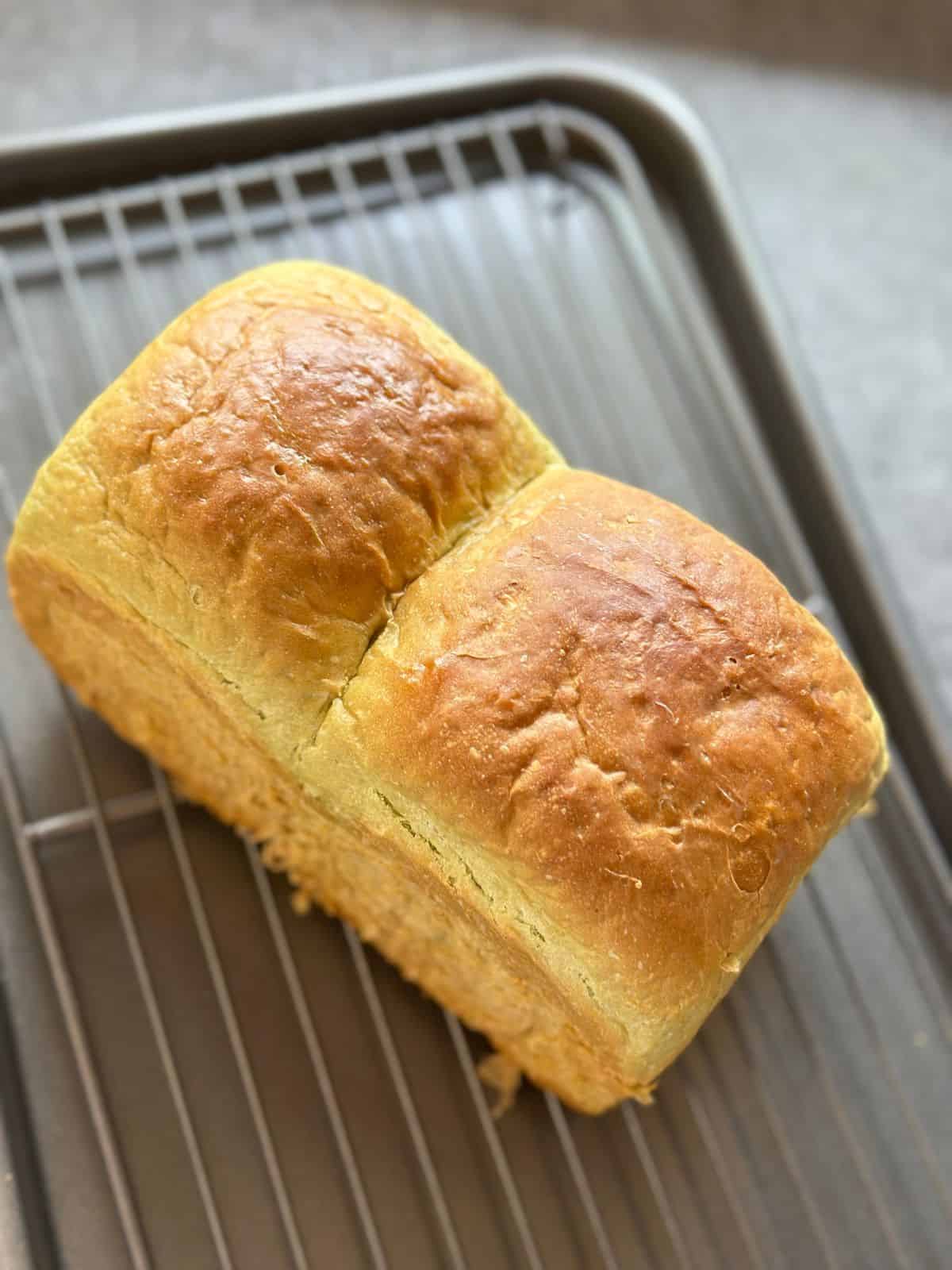
Expert Tips
Yudane texture – When mixing flour with boiling water (5:6 ratio), stir quickly so you don’t end up with dry spots. If it looks lumpy, that’s okay—it’ll smooth out during kneading.
Pandan flavor – Fresh pandan leaves give a grassy-sweet, vanilla-like aroma you can’t get from extract alone. If you can’t find them, use a good-quality pandan extract, but expect a slightly different flavor.
Shaping tension – Keep the roll snug but don’t crush out all the air bubbles. Even tension = taller loaf, uneven tension = lopsided loaf.
Proofing environment – Too warm and the dough can overproof; too cold and it’ll take much longer. Aim for a warm, draft-free spot around 80–86°F (27–30°C).
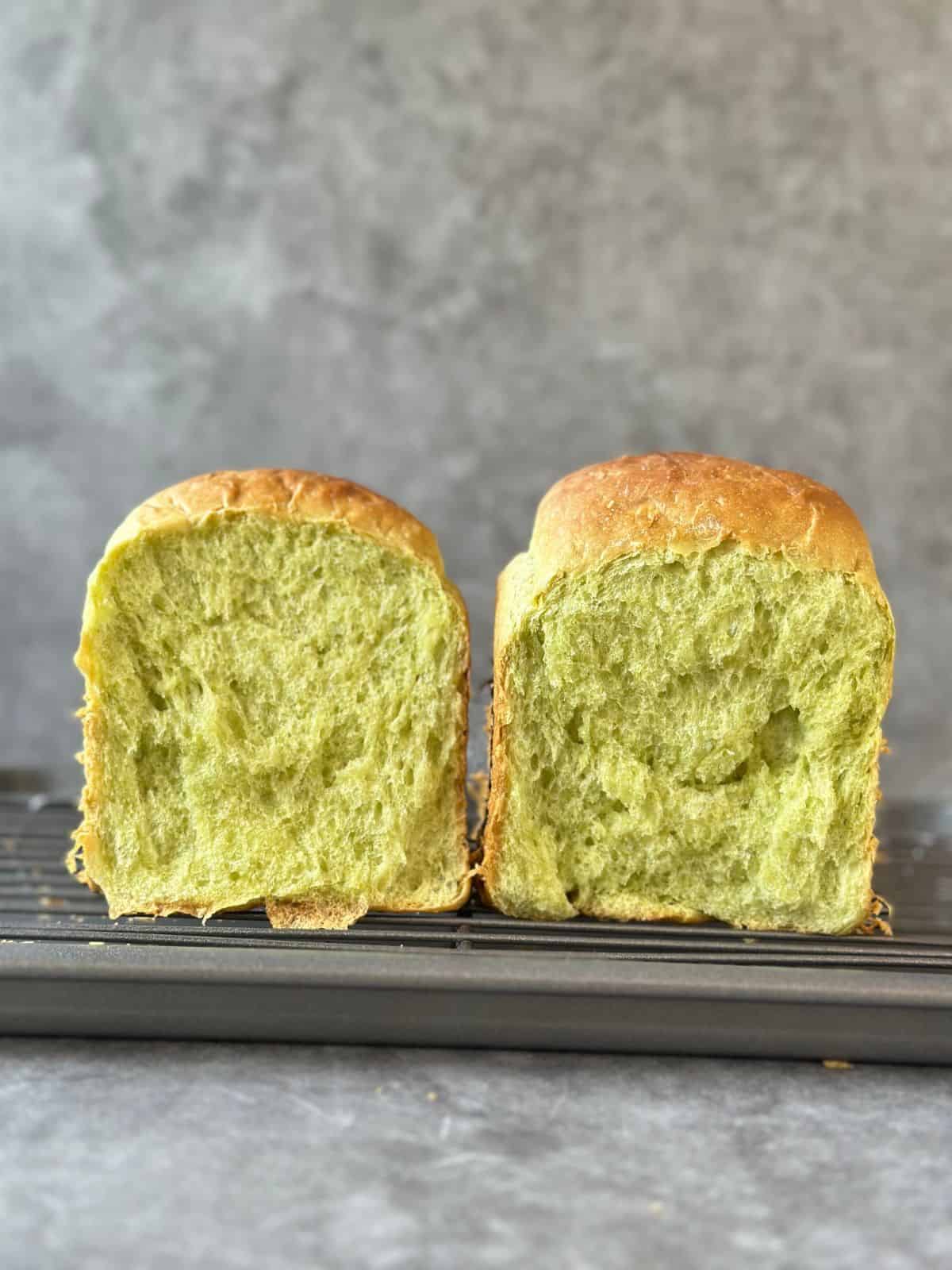
Variations & Ideas
Just as it is – Fresh out of the oven (and cooled, of course), it’s so soft and fragrant that it doesn’t need anything else.
With kaya (coconut jam) or ube halaya (purple yam jam) – Classic Southeast Asian pairings.
With Vietnamese coffee – This fragrant pandan bread pairs beautifully with Vietnamese coffee—whether it’s a creamy egg coffee or a rich salt coffee.
Ice cream sandwich – Slice thick, stuff with coconut ice cream, and you’ve got a fun summer treat.
More Treats from the Asian Bakery

(gluten-free)

(gluten-free)
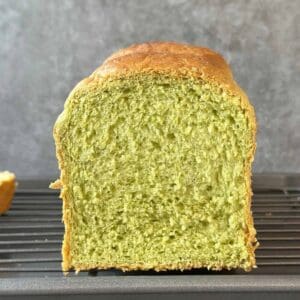
Pandan Bread Loaf (Vegan)
Equipment
- 1 kitchen scale (for precise ingredient measurements)
Ingredients
Yudane
- 60 g bread flour
- 72 g boiling water
Main Ingredients
- 240 g bread flour
- 80 g pandan paste (made from pandan leaves) + water (from 10 pandan leaves)
- 70 g coconut milk (18-20% fat)
- 20 g coconut oil (or vegan butter)
- 40 g granulated sugar (≈ 3 Tbsp)
- 1⅓ tsp instant yeast / active dry yeast (4g)
- ¼ tsp salt
Instructions
The Day Before
- Yudane – Mix 50 g flour with 60 g boiling water. Stir until smooth, cool, cover, and refrigerate overnight.
- Pandan Paste – Blend pandan leaves with water, strain, and refrigerate overnight. Keep the thick green layer; top up with water if needed to reach 80g.
Baking Day
- Make the Dough:In a mixing bowl, combine the remaining flour, pandan paste, water, pandan extract, coconut milk, sugar, salt, instant yeast, and the chilled yudane (cut into small chunks with scissors for easier mixing). If using active dry yeast, dissolve it first in the warm water from the recipe before adding.Knead until the dough starts to develop gluten. Add the coconut oil (or vegan butter) and knead until smooth, elastic, and pulling cleanly from the sides of the bowl.
- First Rise:Cover the bowl and let the dough rise in a warm, draft-free spot (an oven with a bowl of hot water works well) for about 1 hour, or until it’s 1.5–2× its original size.
- Shape the Loaf:Punch down the dough to release big air bubbles. Divide into two equal pieces.Pat or roll one piece into a rectangle, then roll into a snug log.Rotate so the smooth side faces down, pat or roll again to the width of your loaf pan, then roll up from the short side into a snug log. Keep tension even so the loaf rises tall, not wide. Pinch seams and tuck ends under. Repeat with the second piece.
- Second Rise:Place both logs seam-side down in a greased loaf pan. Let rise until about 1.5× bigger, keeping that “twin roll” look.
- Bake:Preheat oven to 355°F (180°C) about 20 minutes before baking. Bake for 20 minutes, then reduce to 335°F (170°C) and bake another 20 minutes.
- Cool:Let the loaf rest in the pan for 5–10 minutes to keep the crust intact. Run a butter knife around the edges, then gently remove (with oven mitts—it’s hot!) to a wire rack. Cool completely before slicing for the softest crumb.

